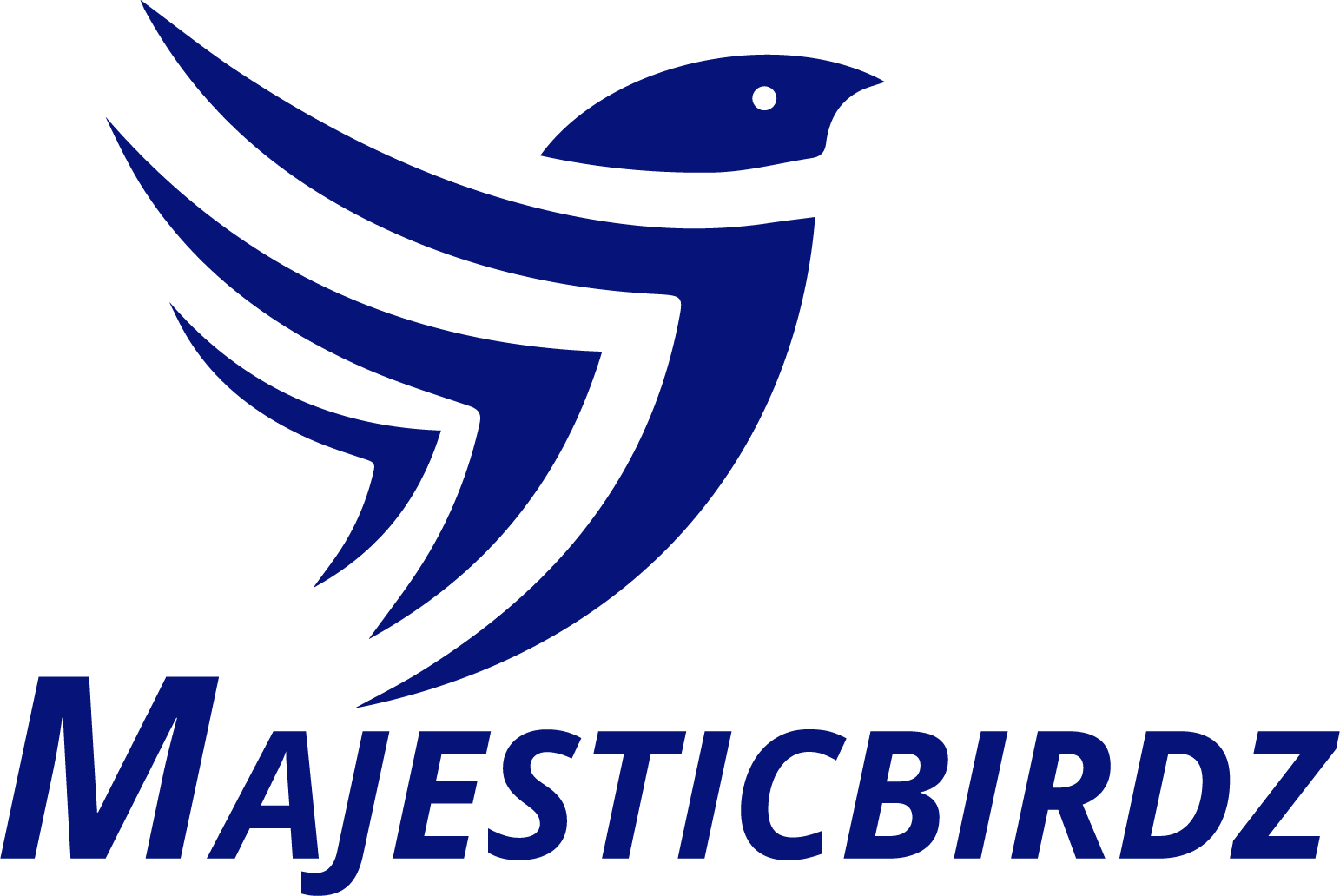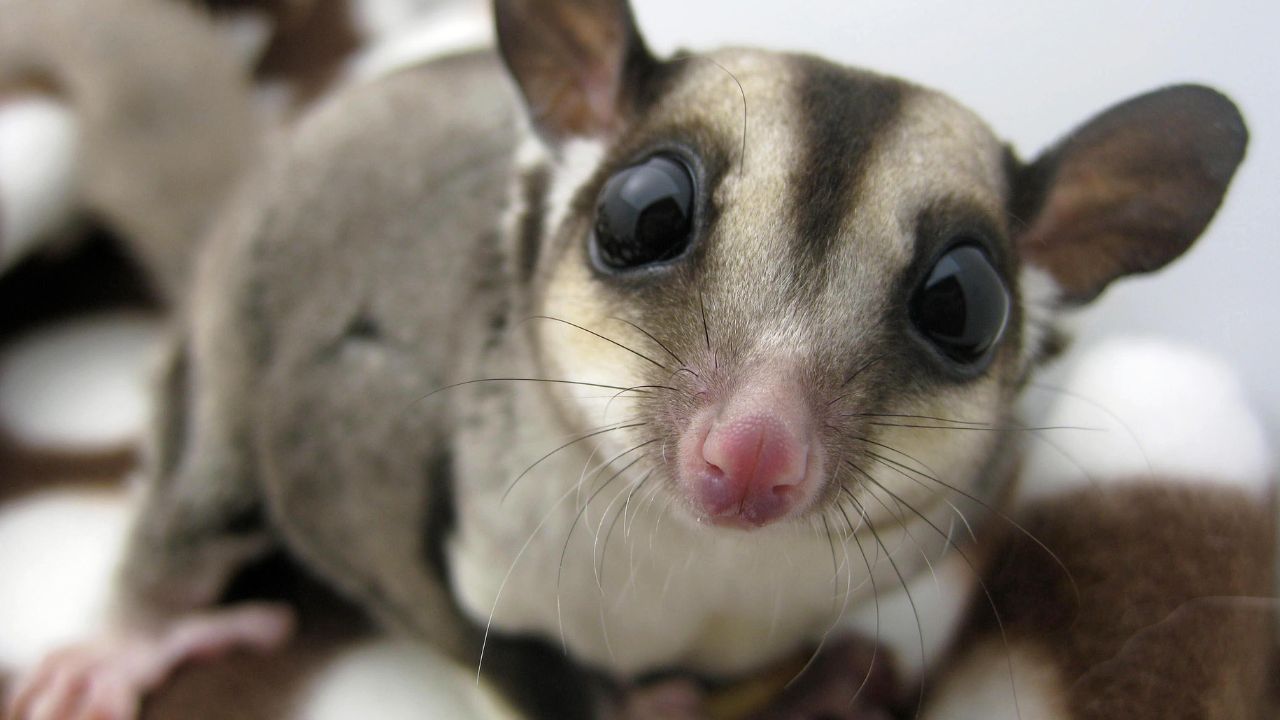Sugar Gliders are small marsupials and gliding possums that have captured the attention of many animal enthusiasts across the globe. They are popular among those who love to keep exotic pets. Their name “Sugar Gliders” refers to the large amount of sugar they intake through sap and nectar, and their ability to glide among trees.
Let’s delve into the fascinating life of Sugar Gliders, their unique characteristics, habitat, and behavior to notice before keeping them as a pet.
Physical Features
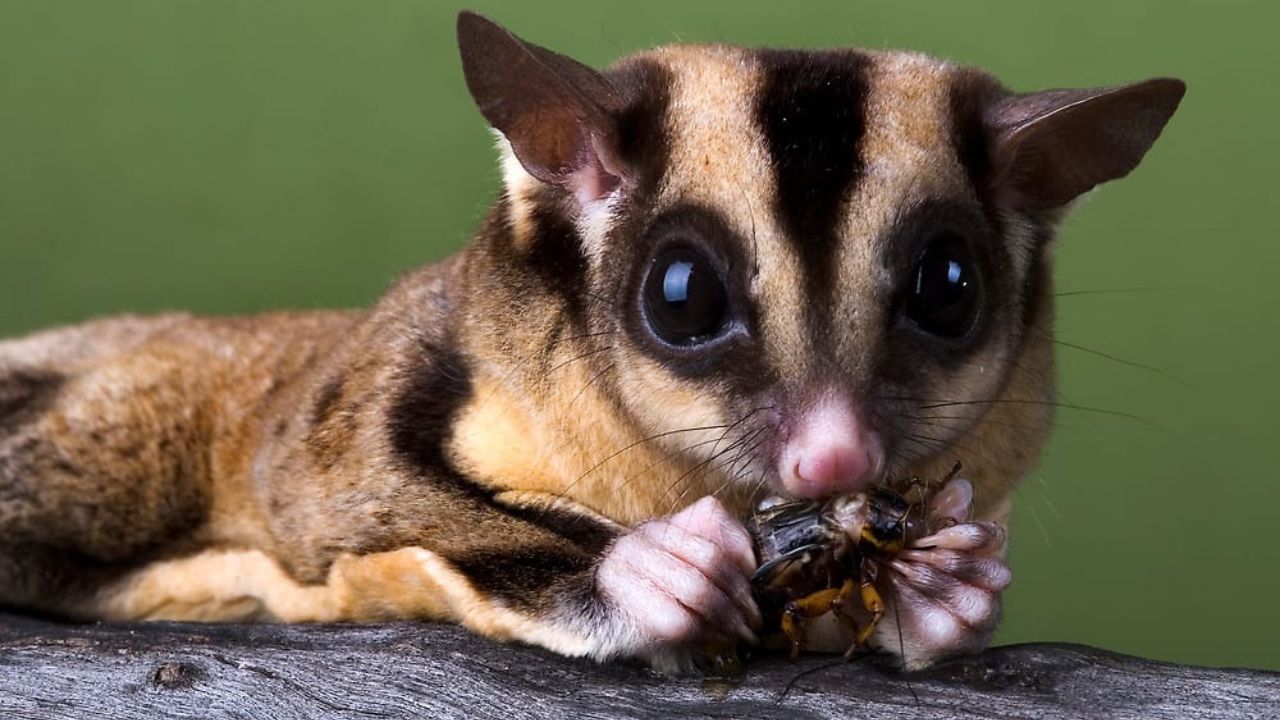
The Sugar Gliders are little gliding possums (tree-dwelling Australian marsupials with a prehensile tails). They have squirrel-like bodies covered in soft, pale gray to light brown fur shaded in a way, lighter in color on their underside, to enable them to camouflage. The color of their belly, throat, and chest is lighter or creamy.
You can also see a black stripe running down from its nose to midway of the back.
Habitat
Sugar Gliders are distributed in the coastal forests of Southeastern Australia, including Queensland, New South Wales, and the Great Dividing Range. As Sugar Gliders are nocturnal, their large eyes enable them to see and locate their prey in the night.
Diet
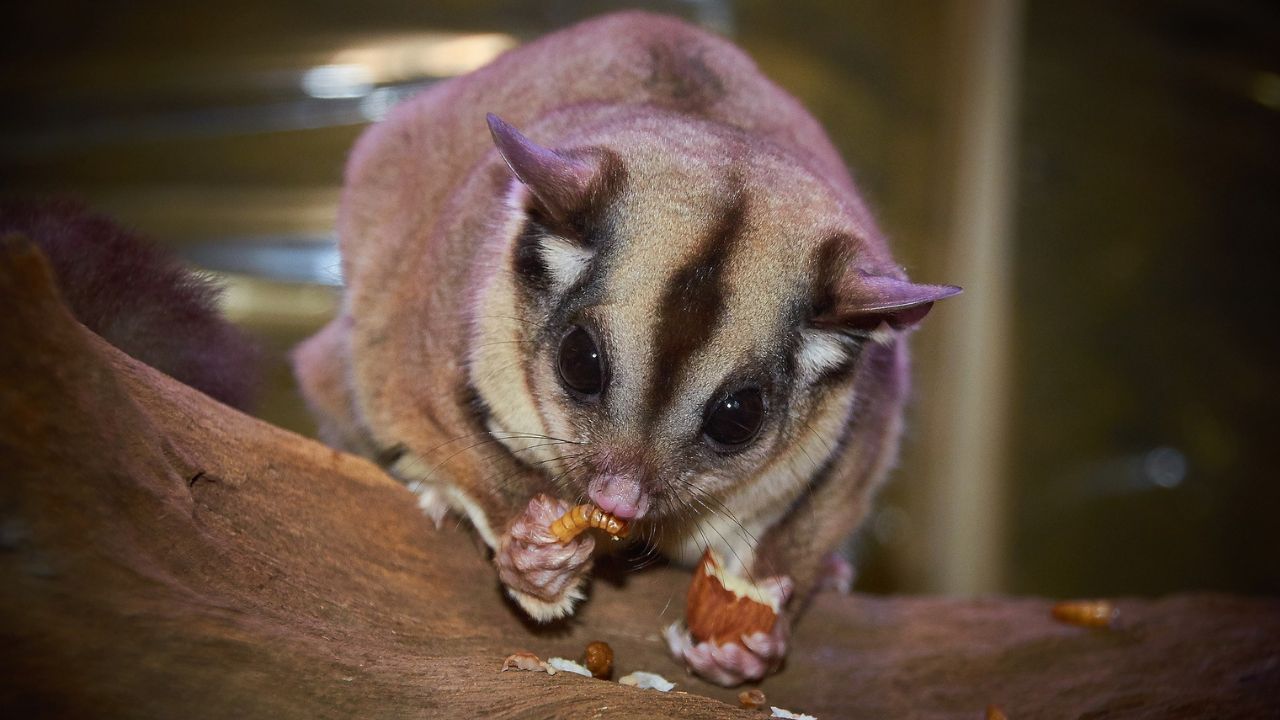
They include a variety of foods in their diet, as per season and the availability of food. Mostly, they feed on acacia gum, eucalyptus sap, honeydew, etc, while in summer they eat insects and other arthropods. For extracting sap or gum from plants, they bark off the tree with their sharp teeth and access the liquid.
They typically consume rainwater to complete the quantity of daily water intake.
A characteristic that is similar to humans
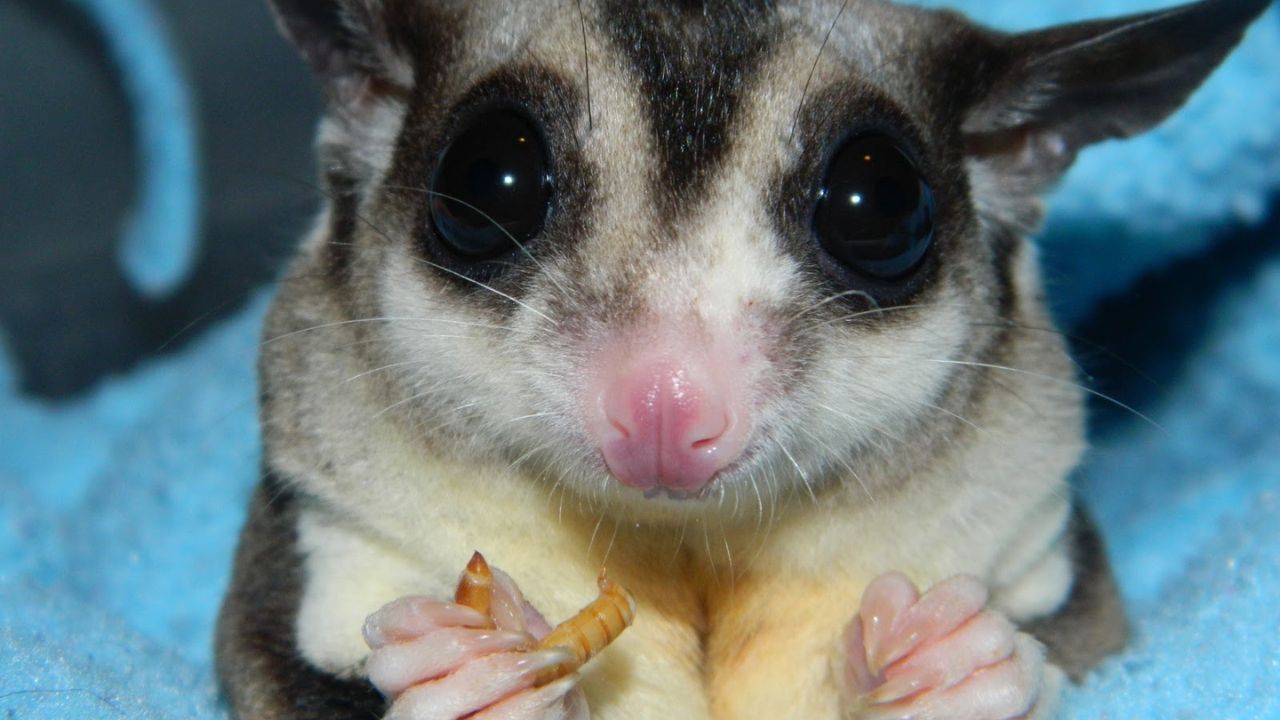
These cute marsupials have five digits on each foot with an opposable thumb on each hind foot. They can bend and touch all the other digits with that thumb just like humans. It also enables them to grasp branches firmly while foraging for food.
Sugar Gliders are sexually dimorphic
Males are slightly larger than females. Male Sugar Gliders have 4 scent glands on different parts of their body including the forehead and chest. They use their scent glands to communicate with other group members and mark their territory. Females also have scent glands including one in the pouch, but do not have any on the forehead and chest.
Sugar Gliders have a flap of skin that allows them to glide through the air, similar to flying squirrels.
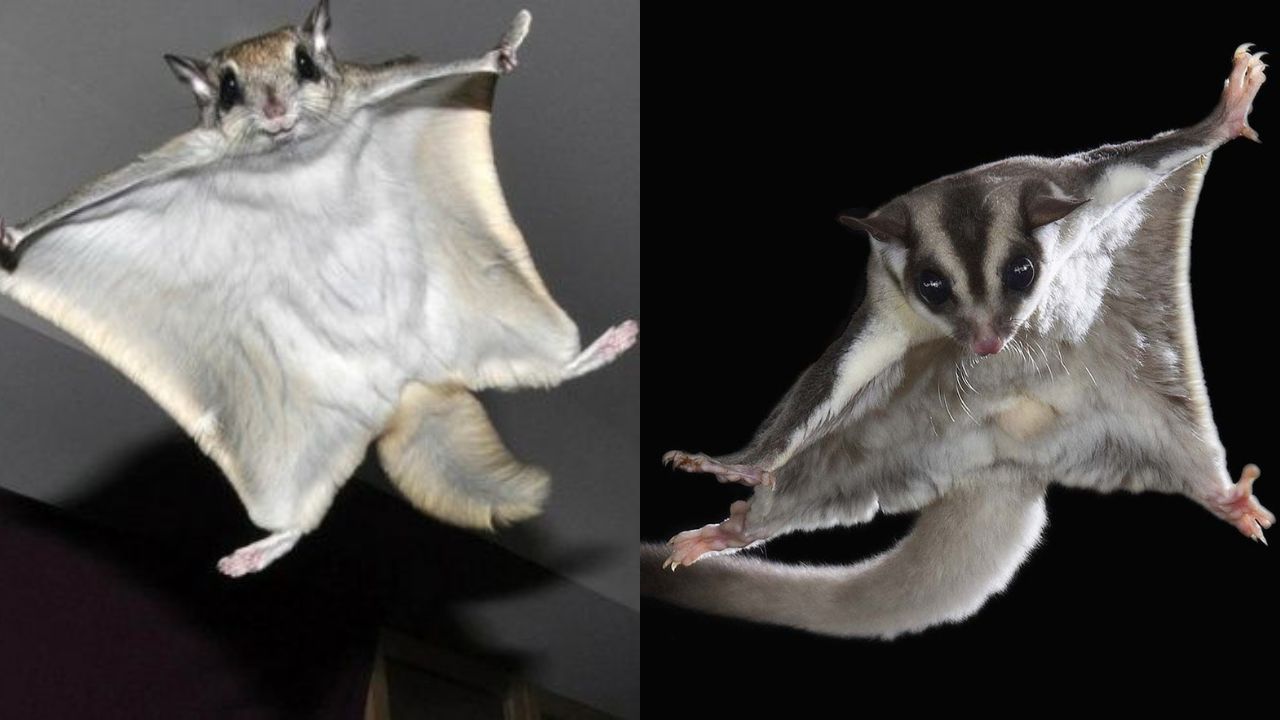
When they want to move from one tree to another, they stretch their arms and legs to create a gliding membrane between their arms and legs. Then, they jump off the tree and spread their limbs, allowing them to glide through the air like a little flying squirrels.
The gliding membrane acts like wings and helps the sugar glider travel a distance of about 50 meters or more.
Sugar Gliders are not for beginner pet owners.
However Sugar Gliders are quick, playful, and social by nature, but they require frequent care to tame them, along with enough space for them to glide or exercise. In addition, they have a very particular preference for food, hence it might be tough for those who are thinking of keeping a pet for the first time. By educating yourself about their behavior and diet and putting in considerable effort, you can tame them. It’s important to handle them gently and provide them with social interaction to keep them happy and healthy.
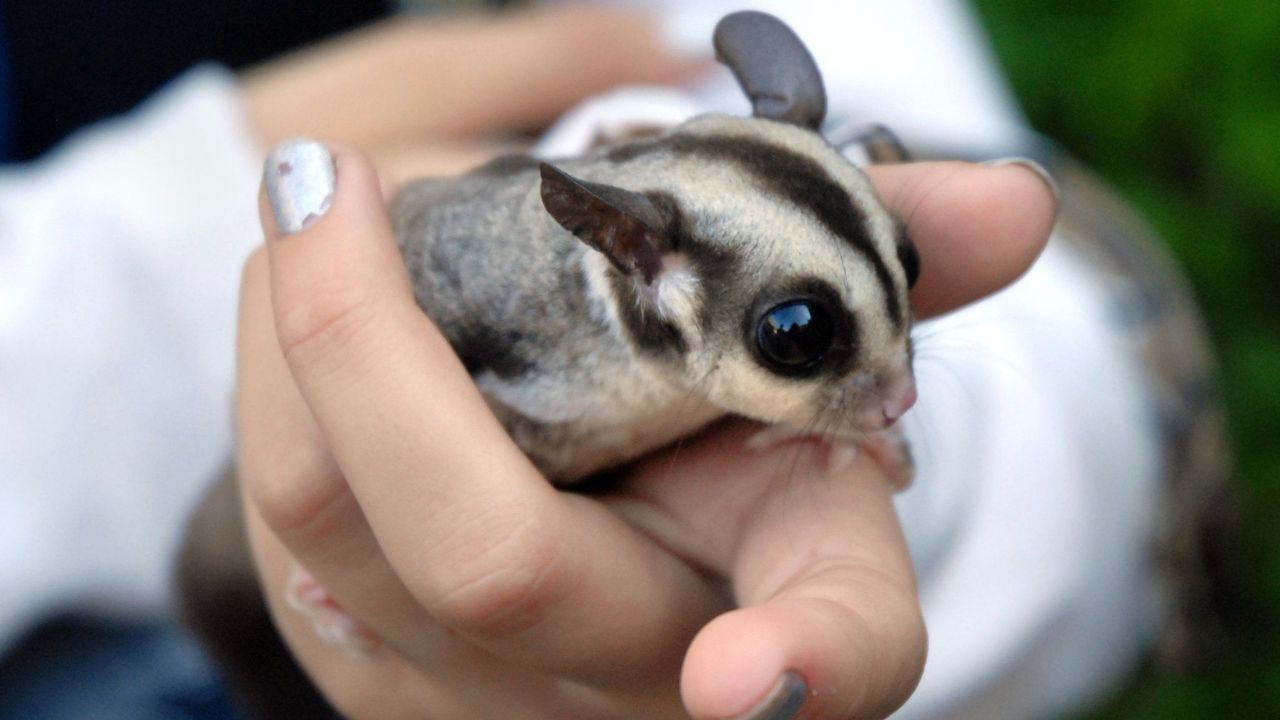
Moreover, they might be a perfect pet for those who have an active lifestyle at night.
Sugar Gliders are truly fascinating creatures. They can live up to 12 years in captivity while around 9 years in the wild.
Due to their social nature, gliding abilities, and unique characteristics, they bring wonder to those who want to own exotic pets or pocket pets. If you’re considering having a sugar glider as a pet, make sure to do thorough research and provide them with a loving and suitable environment to thrive in.
